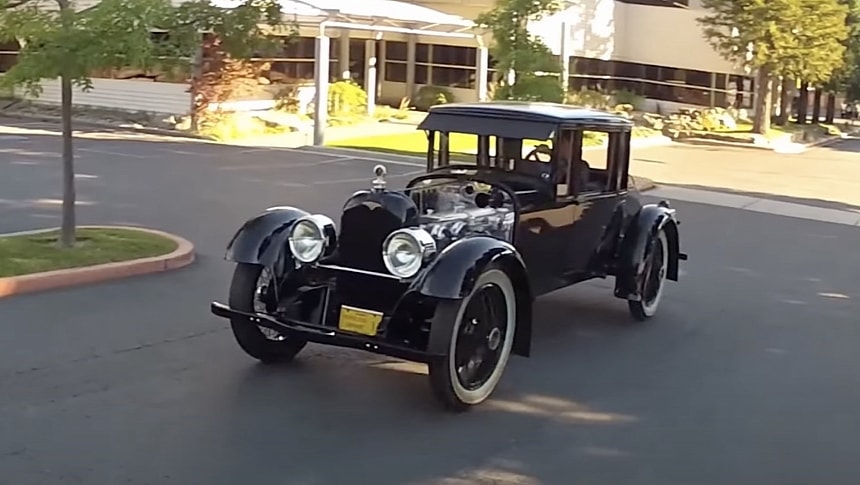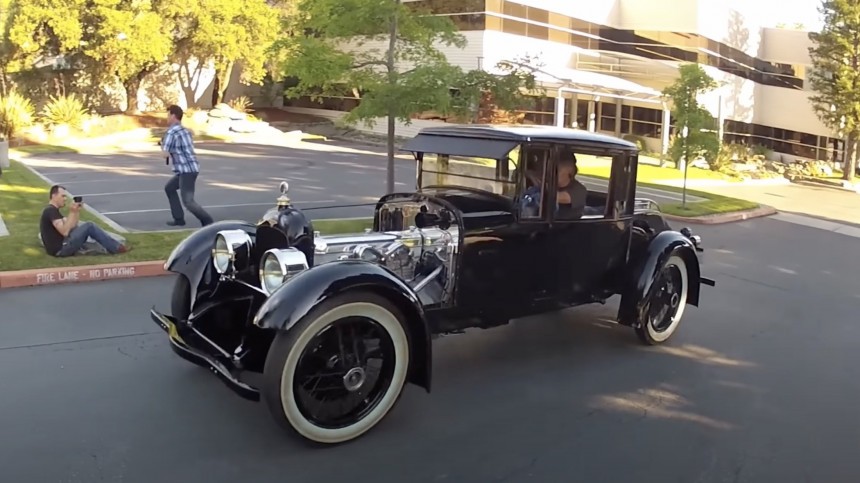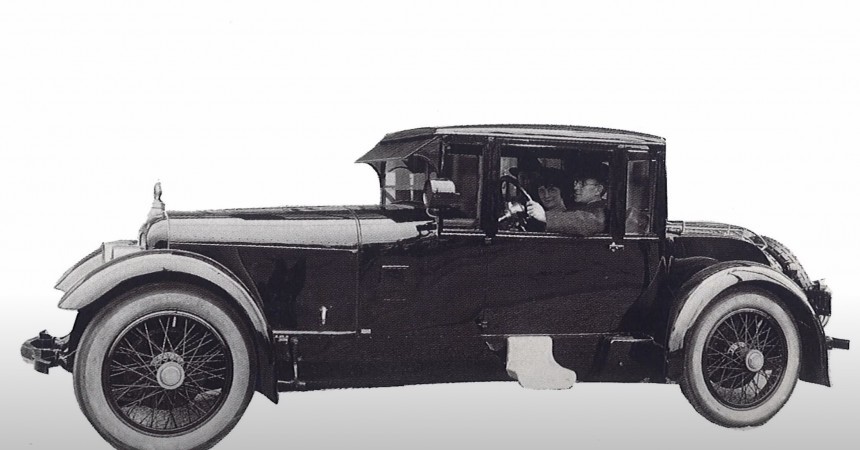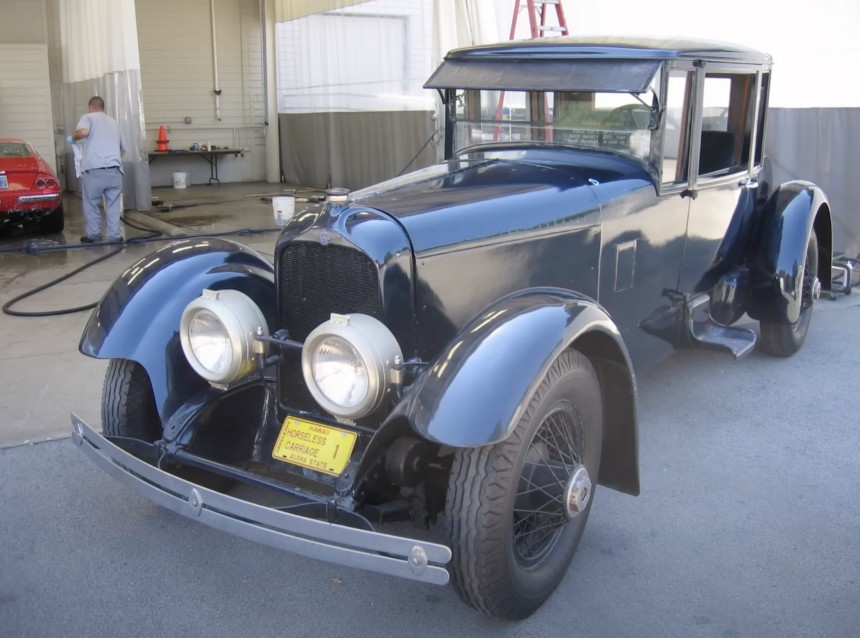This is the car that the world's most pretentious collectors dream of. One day, Jay Leno walked up to the owner with a blank check and asked him to write down whatever amount of money he wanted because he really wanted to have the first-ever Duesenberg in his garage. The owner declined the offer. He still has the car, while Leno still dreams of buying it one day.
Exclusive. Exclusive. Ferociously expensive. The Duesenberg Model was one for the movie stars. They were twice as costly as a Cadillac or a Packard. It was a car that would somehow win its way to a trophy at every concours it went to.
Duesenberg built aircraft and marine engines and race cars before the First World War, but never a road car. And then, in 1919, they finally started building road cars.
Samuel Castle was the son of the one who founded the Castle Cooked Food in Hawaii in 1851. He was a 7-foot-tall, extremely wealthy politician. He asked Duesenberg to build a road car for him, and they did. The first-ever was the Straight 8, which was to be called the Model A once the Model J came out.
It was the first mass-produced vehicle with a straight-eight, which was the most powerful engine put in a street car up to that moment. The engine pumped out 88 horsepower when most cars came with around 40 or 50. It could almost hit 100 mph.
Duesenberg built a chassis that had four-wheel hydraulic brakes, which was racing tech. They sent it to a coachbuilder to Bender to build the body. Samuel Castle wanted a coupe, but he did not have enough space in a normal one, so Duesenberg had to figure out a car with enough space for him. When it was completed in 1921, they sent it to him in Hawaii on a three-masted schooner.
Those who wanted to buy one had to pay $6,500, which translates to approximately $116,000 in today's money. It had somewhat of an odd shape, it was black, boxy, and had an exhaust cutoff. The mechanism could make the smoke come right out of the engine instead of the back pipe with the help of a lever on board.
When the car was stored in special conditions, the experts found a pad in the driver's seat, designed to push the one sitting there closer to the steering wheel.
When the Duesenberg Model J came out, Samuel Castle sent his own car back to the factory across the ocean to have it updated with J parts. The engineers swapped the fenders and steering wheel, and sent it back to him on the same route.
When Samuel Castle passed away in 1959, his nephew, James, inherited the car. He moved to San Francisco in the 1960s and took the car with him. The family did not know much about how valuable it was and started using it like a utility vehicle and left it waste away.
It eventually ended up in the hands of Samuel's son, Jimmy Junior. He was the one who moved it to Canada. He took it to a restoration guru Bruce Canepa and asked him to fix it up, but he declined. Jimmy kept bugging Bruce until he finally accepted.
He hired specialists to work on every element of the car he had never worked on before. Dave Stoltz led the charge. His team took it apart and discovered that, after years spent in humidity and salty air, it was a mess. But Bruce Canepa insisted on saving any part that could be saved to keep it as original as possible.
He decided that if a section of a part is rusty, only that section goes. The restoration took ages. It was finally completed in 2013. They were planning to take it to the Concours d’Elegance at Pebble Beach that year. But weeks before the event, they realized it was not running properly.
They eventually found a crack in the engine block. There was not much time left, so they had to fix it without taking the massive engine out. And they did. There was no other way. So, they made it to Pebble Beach. It finished second in the Duesenberg class.
Jimmy was not disappointed, but Jay Leno was furious. He thought the car deserved so much more. He made some phone calls, talked to an expert, and asked him to come down there to fix some lighting wiring. Minutes later, the problem was fixed.
But Jimmy couldn't care less. He was only dreaming of taking his grandkids to McDonald's in that car, while everyone was telling him it should have won the Best in Show Award.
Furthermore, the Model J elements added on Samuel Castle's request were removed because Canepa wanted it to be as similar as possible to the car that had rolled off the production line in 1921. The historian only found four photos of the restoration process, all from different angles. He photoshopped them to find out more details about the car.
When Jay Leno saw the Duesenberg, he just had to have it. He walked up to Jimmy Castle and offered him a blank check. "Write down whatever numbers you want," he told him.
Jimmy said "No!" He wanted the Duesenberg to remain in the family. In 2013, it was speculated that the value of the car would go as far as $13 million. But we will probably never know because it will never be sold.
Duesenberg built aircraft and marine engines and race cars before the First World War, but never a road car. And then, in 1919, they finally started building road cars.
Samuel Castle was the son of the one who founded the Castle Cooked Food in Hawaii in 1851. He was a 7-foot-tall, extremely wealthy politician. He asked Duesenberg to build a road car for him, and they did. The first-ever was the Straight 8, which was to be called the Model A once the Model J came out.
It was the first mass-produced vehicle with a straight-eight, which was the most powerful engine put in a street car up to that moment. The engine pumped out 88 horsepower when most cars came with around 40 or 50. It could almost hit 100 mph.
Those who wanted to buy one had to pay $6,500, which translates to approximately $116,000 in today's money. It had somewhat of an odd shape, it was black, boxy, and had an exhaust cutoff. The mechanism could make the smoke come right out of the engine instead of the back pipe with the help of a lever on board.
When the car was stored in special conditions, the experts found a pad in the driver's seat, designed to push the one sitting there closer to the steering wheel.
When the Duesenberg Model J came out, Samuel Castle sent his own car back to the factory across the ocean to have it updated with J parts. The engineers swapped the fenders and steering wheel, and sent it back to him on the same route.
It eventually ended up in the hands of Samuel's son, Jimmy Junior. He was the one who moved it to Canada. He took it to a restoration guru Bruce Canepa and asked him to fix it up, but he declined. Jimmy kept bugging Bruce until he finally accepted.
He hired specialists to work on every element of the car he had never worked on before. Dave Stoltz led the charge. His team took it apart and discovered that, after years spent in humidity and salty air, it was a mess. But Bruce Canepa insisted on saving any part that could be saved to keep it as original as possible.
He decided that if a section of a part is rusty, only that section goes. The restoration took ages. It was finally completed in 2013. They were planning to take it to the Concours d’Elegance at Pebble Beach that year. But weeks before the event, they realized it was not running properly.
Jimmy was not disappointed, but Jay Leno was furious. He thought the car deserved so much more. He made some phone calls, talked to an expert, and asked him to come down there to fix some lighting wiring. Minutes later, the problem was fixed.
But Jimmy couldn't care less. He was only dreaming of taking his grandkids to McDonald's in that car, while everyone was telling him it should have won the Best in Show Award.
Furthermore, the Model J elements added on Samuel Castle's request were removed because Canepa wanted it to be as similar as possible to the car that had rolled off the production line in 1921. The historian only found four photos of the restoration process, all from different angles. He photoshopped them to find out more details about the car.
When Jay Leno saw the Duesenberg, he just had to have it. He walked up to Jimmy Castle and offered him a blank check. "Write down whatever numbers you want," he told him.
Jimmy said "No!" He wanted the Duesenberg to remain in the family. In 2013, it was speculated that the value of the car would go as far as $13 million. But we will probably never know because it will never be sold.












